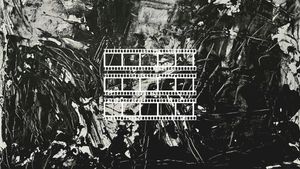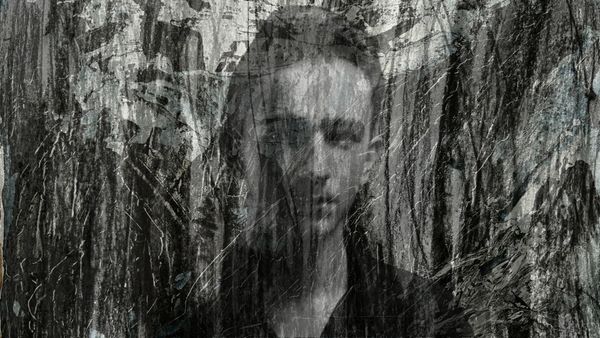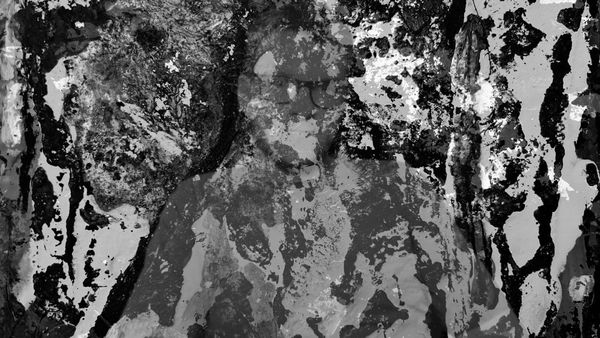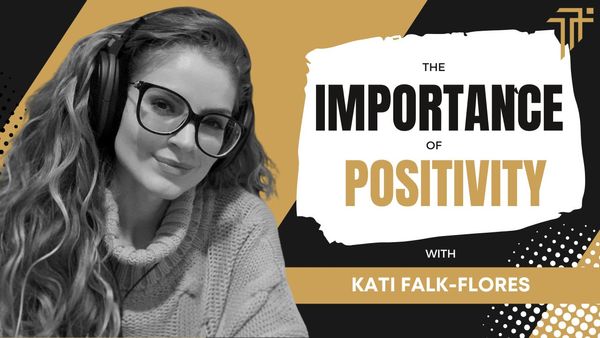For this one I thought I would change things up a little.
I am actually on my computer (shock horror)
I wanted to show you how I mangle single samples to create tracks.
Fun!
Transcript
Hey guys welcome to session number 16 of the trailer music composers podcast. Testing, testing, one, two, three.
Music.
One with one microphone. Who is still recovering from all the hours he lost watching Lost. Welcome to the trailer music composer’s podcast.
Hey guys, welcome to another episode of the trailer music composers podcast. Now in today’s episode I wanted to do something a little bit different. And you might notice that firstly it’s a little bit quieter so I’m not actually walking around the woods and well I was going to say secondly, but there isn’t really a secondly thing because I haven’t told you it yet. I wanted to do some audio work on the podcast. Because actually I was just thinking about it, you know you don’t always need to see what I’m doing for you to be able to hear it and feel it and understand it. And I wanted to do this podcast based around something I was talking about yesterday on my group call with my trailer music school members which is making drums. Scary, was the word we were working on.
But I wanted to talk about it in a way that was actually making drums have more impact. And I’m not talking about rhythm here, I’m talking about the way to make your drum bring something new and interesting to the table, what I’m going to do is I’m just going to sketch out a very, very basic idea, hopefully you will be able to hear everything I’m doing. In fact I probably should have checked that in my Logic, I’ve got my Logic session opened up. Yes, yes you should be able to hear everything I’m doing.
So I’m just going to record a few things. I’m going to load up an instance of my string risers which you can get from the trailer music school (Music).
There we go. So all I’m doing here is I’m just creating a weird horrible bed. So what I’m going to do is I’m going to do just like a little tension bed, if you can hear that. And I will do some things with it in a second. But I want to introduce drums.
Now what I’m going to do is I’m going to avoid using one shots, and what I mean by that is like as trailer composers, we can and have the tools to use one shots that we buy from companies to one shots that we create ourselves from stuff. And I’m not going to be doing creative recording with a Zoom here, I’m just taking some samples from libraries that I have. And what I’m going to do is rather than taking like huge trailer hits that you get from sample libraries, I’m talking about like drum samples that you then do creative stuff with.
So let’s just (Music) let’s get this drone played in a recording. Here we go (Music) rather than you actually listen to me hold it down, I’m just going to do this for 45 seconds, let’s say there we go. I’m just sending the note, and I’m going to balance it in place just so that I have it there so I can whenever I want to I will be able to hear it rather than always having to seat at the beginning of the note which is, actually another thing that came up yesterday in the call is me working with audio a lot. And that’s one of the reasons because I actually like to have really, really long sustained notes. And if you’re working with long sustained notes sometimes you want to start half way through, but because it’s a midi note you don’t actually hear the midi note isn’t triggered. So that’s why (Music). Yes there we go, those filthy string risers of mine which I do love so very much.
Now I’m just going to chuck some reverb onto it. And maybe just mash it up a little bit. In fact lets just mash it up first into a decapitator just do it, absolutely smash it, dark fat, yes that’s it, it sounds like something you’d cook. (Music). Cool.
So again I just want to make it like push it back a little bit further and I’m going to push it back even more with just an instance of space designer. (Music) There we go, let’s just make it a large indoor space. Hang a one (Music). There we go. Ok so what I want to do here, obviously that’s scary of itself, that string riser, but I want to start talking about drums because often when we’re working with hit stuff people forget the impact that just a single hit can have. So what I would do is I will load up another instance of the drum library. I will probably lay up damage because damage is, actually I won’t load up damage because I always load up damage, I’m going to load up something else. And those of you who have damage will understand why I always load up damage. It may be old but it’s still forking cool. (Note) Sorry I’m going to load up Hans Zimmer drums, why not. For junkie excels.
Nice, let’s play that in. So I’ve just got it going, the steering riser is happening (Music) it’s getting a bit creepy, hello, hello, hello, hello. Ok so there we go, that’s just a hit, boom,. Hits placed in there a bit randomly after a few seconds I’m just quantising it.. It’s really interesting actually knowing that you’re not actually seeing what I’m doing (Music) honestly guys, I really enjoy it myself. So there we go.
We’ve got the sound, what I’m doing is I’m loading up the sample and here it is (Drums) now they come with a new pit shifters within it so I’m going to balance playing some pit shifts like that. I’m not bothering to name anything (Music). So what I’m thinking of here is how to make drums sound scarier and freakier and there’s a couple of days to do it. This is just a sample from a library I’ve purchased. And all I did was shift it and it sounds like you can and do it, you can make it sound out of the ordinary right.
The other way is my next one. I’m bouncing that sample in place again right. And I’m going to reverse it, functions reverse, yes and there we go unmute that. Here we go. So what I’m going to do now is I just want to have that like a pro hit and sounds and drums and things to let the listener know something dark is about to occur. So if I hear it without the riser. Here we go. (Music).
Cool so it’s basically like a way to do your roll, I’m just going to fade out that last bit because we didn’t get that clip. (Music) it sounds like a drum roll right. So let’s go in and normalise these samples. (Music) yes now we’re talking ok. (Music). I think that sounds wicked, I’m pretty happy with that. Ok now I just want again to think about ways I can mangle this. So I’m going to solo this reversed one. I mean that’s quite cool. So let’s smash this and explore it. So first thing again let’s load up the decapitator and smush it. I’m just going to put the drive on, put puncture on, the high cuts down to a one K. so I want to keep it like. That’s freaky and I love it.
Ok so let’s hear how that sounds again. I’m just thinking about using a single sample and what I can do with the toys I have to mash and mangle it so that it creates a kind of freaky scary effect (Music). I mean that pretty intense isn’t it. So I’m going to bounce that in place so I can see the audio file and it’s going to seem like this humongous. There we go, it’s absolutely smushed. So I’m going to cut that file there just at the hit point (Music) Like this. That sounds really weird doesn’t it, let’s just move it a little bit there. So it goes (Music) ok and I’m going to add a fade into that first drums intro. (Music) Nice. Now we’re getting somewhere.
The thing I’m trying to get at here is I really like using reversed audio for those of you who don’t know me and the way I write I use reverse audio a great deal because it has such a wonderful effect on the samples you’re using. So let me just bounce, what I’ve done is I’ve gone into Junk Excel again, but instead of (Music) it’s not pitched down. So I’m going to reverse that sound so that we have another reversed sound going on. Because that’s how I like to create my own hits. I mean it’s sounding a lot more interesting and weird isn’t it.
So what I’m going to do now is I want to create something strange and weird with this sample here (Music) and I think there’s magic in them. So I’m going to zoom in and I’m going to cut a little section, maybe this much. So it should sound like this. (Music) Cool. so I’ll e cue that so it’s not quite so crazy low, I’m going to do a low cut ok cue. (Music) and chuck it into some strange reverb just to make it feel like slightly out of space, out of place and not necessarily in the same space as everything else, small space, small dark spring. (Laughs) That’s not the right place, that’s a horrible place, that sounds empty dining room. Yeah that sounds good. I love the names of these reverbs. (Music) Yeah that sounds good. Let’s see what happens when I just do completely wet and huddly (Music) That’s cool.
Ok. So I’m just using this sample it’s enough to create the sense of fear and oddities. And I’m just going to copy and paste them into a pattern so our first one which is hello Mr Dark Drum. (Music) I’m going to send that over to the left.
So what I’m trying to teach you here is (Music) the creativity you can have when you start messing around (Music) with a single sample like you can hear that even more. (Music) Awesome. Now I’m just going to take this again that same sample and I’m going to chop it up into a small sixteenth. And I’m going to put that sixteenth and do it like a little fill you know, just because fills are fun. It’s so small I can’t grab it, zoom in. and put it on the right note, so it’s a sixteenth note every right notes, da, dah, dah, like. And then do that for a whole bar. Let’s do a quick fade out and fade in so it doesn’t clip. Don’t know where you are I didn’t hear anything. So I’m going to create a new audio channel and I’m going to copy those onto the audio channel there. (Music). Yes there we go that’s kind of what I wanted. And I’m going to fade that in just a simple fade up so you’ve got this like little effect. (Music). There we go. And I’m going to copy that and it’s going to happen occasionally, maybe every other bar. And then I’m going to copy and paste the main big drum thing, drum sound, so that it happens a little bit more frequently rather than just once.
So lets have a listen to what I’ve done. So I’ve got the low sound, you know ahhh, the kind of like crazy smooshed reverse into it, you’re standard reverse into it and then we’ve got the cut snippet. And then we’ve got that poup, poup, poup, poup kind of like a bass stutter. (Music). Yeah I think that works really nicely I like that. And I think like the strange stutter is a real beast.
Now what I’m trying to show you here is I just have one sample and I didn’t use pre made trailer hits. You know the ones I’m thinking of. The ones that sound immediately massive and huge. Let me see if I can load one up, I’ll load up one of my own ones why not. I obviously create these for myself, we’re looking for Schrieber swish hits. Here we go, like this. (Music) That’s awesome and I’m going to chuck that it now because I think it sounds cool. And it’s kind of what my trailer track needs.
But the problem with those type of hits is if you use them all the time they lose their impact. And that’s not what we want. And let me just show you what I mean I’m literally just bouncing it in place and then I’m going to reverse it, because actually the tail for it is quite small. Let me show you what I mean. I’m going to chuck that standard bit in. just line it up so that it’s actually playing in time. (Music). Here we go.
See what I mean, I mean obviously I could mix that more musically, sometimes when you’re using those one shots, it just sounds like someone’s used those one shots on your track and you get this a lot when I hear some trailers and that’s such a shame because some people’s tracks sound so fantastic and then they’ve shoved these ones on which I love and they have their purpose but if you use those shots too much or at least not in a well layered manner then it loses the impact and it’s such a shame. Because what we’re trying to do here is created something that’s scary and freaky and art. Lets see if I can marry it a little bit better. (Music) Yes that’s a bit better, just reverse it at the beginning.
So what I’m going to do is I’m going to think about the drums, I want to create a stick sound. (Music) Ok. so I’m going to pitch that surdo up, this is going back to the original sample. And I’m trying to make this (drum sound) I mean that’s kind of the sound I want anyway. Lets just up the velocity.
Now I would be really interested to hear what your thoughts are on this kind of format of the podcast, where it’s me working with audio so you just actually hear it rather than seeing it. Because sometimes that’s quite a fun way to work and I quite like it. On BBC Radio 4 they do some of these podcasts which are just guys and girls walking around and they are just talking about sound. And because you are just listening you are actively just listening and you’re not looking, (Music) I’ve bounced that thing out and I’ve chopped up a little part of it because I want to become like a stick. And I’m going to just EQ that, and it’s going to go in sixteenths I reckon. It’s going to sound like a machine gun because it’s a single sample played over and over again on a sixteenth. So let’s just, yeah EQ the bottom out. There we go, yeah, that sounds cool.
And now let’s give some fade ins and some fade outs to them, ok let’s give it a bit of a stronger fade out. There you go I’m going to get into a different world here with these kind of like strange EDM things I’m doing.
Let’s move these, what I’m going to do is I’m going to use these to create like a percussive riser and I’m going to put these on like sixteenths, not sixteenths sorry, thirty seconds to make them smaller, again I’m trying to use these samples to create something a bit out of this world. (Music). That doesn’t sound as cool as I was hoping but that’s often the way it is. Lets just add it. Automatic, add the volume then add a curve to the volume too, make sure I’m also ending at the right point. Yes here we go (Music). Yeah that sounds cool again just from a single sample. (Music). It sounds great and I’m really happy with this and I kind of want to carry on working with it and make it sound more crazy cool. And what I’m doing here, this is my act one, this is like my mood setting and I’m starting to bring it into act two obviously.
And obviously when I get into act two and three I will bring in the big guns. I will bring in those one shot samples to emphasise those big editor moments. I will also bring in other samples other than just surdo and I will have rhythms playing and I will have other instruments playing. But what I have done here, I’ve created a strange slightly scary sounding drum track from a single sample. And that is often, if you want to create otherworldly sounds, get creative with a single sample, don’t rely too heavily on the actual sample I was using as playable instruments, use them as fantastic samples because that’s what they are. I mean I can’t sample a surdo but have a sample of a surdo, there it is. You know that’s the same with taikos, the same with all these other instruments, these playable instruments that we spent lots of money on because they’re amazing, are also fantastic libraries to enhance our creativity. And use them in creative ways (Music).
I sure hope you’re not hearing what I’m hearing, my sound card does this thing where it makes everything, it changes the bit rate, I think it’s a fault in the duet, I have a newer duet, for some reason it’s like an old midi keyboard. For some reason I stick to keeping the old broken things. Maybe it’s because I like the annoyance I don’t know. Limiting beliefs, self sabotage.
Anyway so what we need to do, when you get back to your door, to your session, if you’re creating a sound world, maybe this time with your drums or with other instruments take a sample and play with it, export the audio repeatedly, play with it. See if you can create musical effects with a single sample. I mean this is organic sound design at its best and this is what I do a lot with the throat trucks. I will have a shape that I have recorded and I will mess with it to create otherworldly sounds and that’s what attracts people because that’s where you get your signature sounds from. You know if you want to create signature sounds, a sample of one of the horns or a surdo or a double bass and see what you can do with it. As exported audio to create a strange scary effect.
Because often you know signature sounds are scary sounding and that’s what I’m doing here with these. I’m trying to make them sound scary and out of this world. And obviously my turn griser helps, but that’s the really magical part here is having fun with it. And you know how I’ve talked about enjoyment throughout the process of this podcast but having fun with it because I enjoy playing with the audio. It then brings up new instances of inspiration and excitement, it keeps the flow going. Because I’m just essentially playing in the same way that kids, you give them a piece of paper, you give them some colours and they will just play with it. That’s what we’re trying to do with this audio, we’re trying to play with the audio.
Right now I just want to say thank you again for taking your time to listen to this. I do hope you enjoyed this slightly strange format for a kind of video tutorial without the video, because I know I enjoyed doing it and it would be really interesting to hear your feedback on it if you want to do more of these or less of them I don’t know. I will probably do more because they are fun but anyway.
Thank you so much for taking the time to listen and if you want to learn more about getting into trailer music then head on over to the trailer music school check out my courses, check out the instruments that I’ve created as well for trailer musicians and john the community. Sign up to me on YouTube. Subscribe to me on YouTube. Subscribe to the podcast, leave a review, you guys are absolute legends. I hope you enjoyed this, have a nice evening wherever you are and I will see you next time. Well actually I won’t see you, you will hear me next time.
Music.








Member discussion